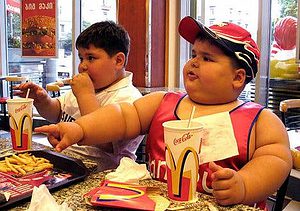Counter the popular dictum “out of sight, out of mind”, Kerri Boutelle, professor of psychiatry and pediatrics at University of California, San Diego’s School of Medicine, wants to tackle junk food addition in a novel way. In her experiments, she instructs overweight kids to stare at foods like french fires or cheetos in order to overcome their urges and develop willpower. Her research has yet to be published, however preliminary findings suggests her method works.

Junk food can be extremely addicting, and when consumed regularly in large quantities it can cause a variety of health problems. For children, who often aren’t aware of the health hazards associated with it, junk food can be particularly appetizing. Subsequent complications include obesity, chronic illness, low self-esteem and even depression, as well as affecting how they perform in school and extracurricular activities.
Often , it’s not enough teaching kids that junk food is bad for them. Smokers know they can get cancer, but they go on with it day by day. Typically, junk food addiction is battled by keeping kids as far away from it as possible. Boutelle takes an alternate route. In her study, she enlisted children between the ages of 8 and 12 and asked them to rate their cravings for a particular food. The kids then had to sniff it, take a bite, stare at it for five minutes, and then report their cravings for a second time.
“We are teaching kids to tolerate their cravings and not eat when they’re not physically hungry,” she told the Wall Street Journal.
Boutelle claims her study works in the lab and for about six months afterwards as well after subsequently tracking the children’s eating habits. Her experiment has yet to be published, however Boutelle is currently working on tracking other kids as well.






